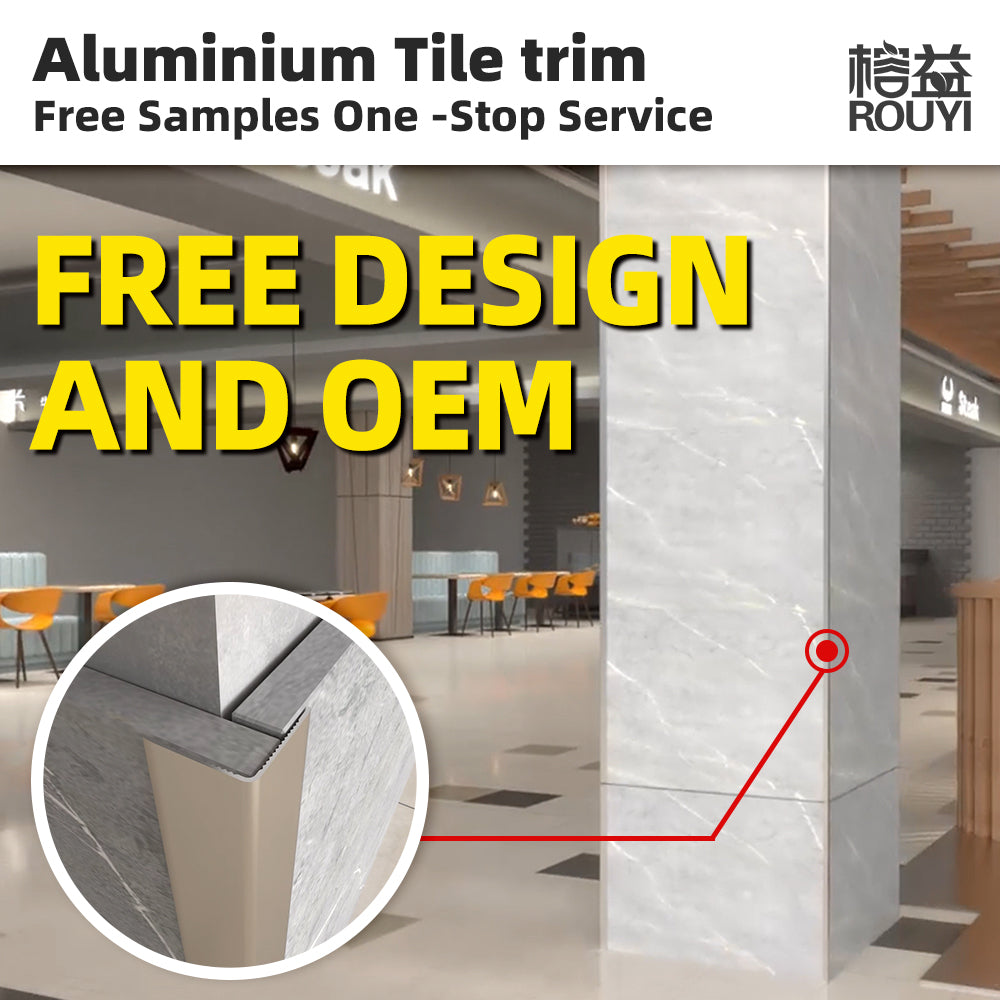Tile trim is an essential component in any tiling project. It not only provides a neat and finished look to the edges of tiles but also protects them from chipping and cracking. When it comes to tile trim, you have two options: OEM and ODM. But what exactly do these terms mean? And how do they differ? In this blog post, we will explore everything you need to know about tile trim OEM/ODM.
What is Tile Trim OEM?
OEM stands for Original Equipment Manufacturer. In the context of tile trim, OEM refers to the process of manufacturing tile trim products according to the specifications and requirements provided by another company. In other words, a company that specializes in tile trim OEM will produce tile trim products based on the designs, materials, and dimensions specified by their clients.
What is Tile Trim ODM?
ODM stands for Original Design Manufacturer. Unlike OEM, ODM involves the entire process of designing, manufacturing, and branding tile trim products. In this case, the ODM company takes full responsibility for the design and production of the tile trim, and the client can simply choose from the available designs or request customization options.
Key Differences Between Tile Trim OEM and ODM
While both OEM and ODM offer customized tile trim solutions, there are some key differences between the two:
1. Design Control: With OEM, the client has complete control over the design of the tile trim. They provide the specifications, and the OEM manufacturer produces the product accordingly. On the other hand, with ODM, the client can choose from pre-designed options or request customization within the available designs.
2. Branding: In OEM, the client's brand is typically featured on the tile trim product. This allows the client to promote their brand and establish brand recognition. In ODM, the tile trim products are usually branded with the manufacturer's own brand, unless the client specifically requests their branding.
3. Manufacturing Expertise: OEM manufacturers specialize in producing tile trim products based on client specifications. They have the expertise and resources to bring the client's vision to life. ODM manufacturers, on the other hand, are responsible for the entire design and production process, showcasing their own expertise and creativity.
Benefits of Tile Trim OEM/ODM
Both tile trim OEM and ODM offer several benefits:
1. Customization: Whether you choose OEM or ODM, you have the flexibility to customize the tile trim products according to your specific requirements. This ensures that the tile trim seamlessly integrates with your overall design.
2. Quality Control: With OEM/ODM, you can have better control over the quality of the tile trim products. You can work closely with the manufacturer to ensure that the materials used and the manufacturing process meet your standards.
3. Time and Cost Efficiency: By opting for OEM/ODM, you can save time and cost on product development. The manufacturer takes care of the design and production process, allowing you to focus on other aspects of your project.
4. Expertise and Support: OEM/ODM manufacturers have extensive knowledge and experience in the tile trim industry. They can provide valuable insights and guidance throughout the process, ensuring that you get the best possible tile trim solution.
Whether you choose tile trim OEM or ODM, it's important to partner with a reputable and reliable manufacturer. Look for a manufacturer that has a proven track record, excellent customer reviews, and a commitment to quality. With the right OEM/ODM partner, you can enhance the aesthetics and functionality of your tiling project with high-quality tile trim.

